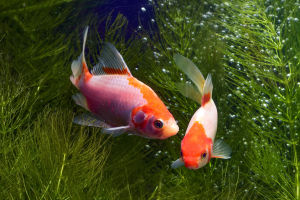Have you ever watched a pelican dive from the sky, wings tucked in, beak wide open, only to emerge with a wriggling fish? It's a breathtaking sight—a perfect fusion of timing, anatomy, and instinct.
But how exactly do these large, seemingly awkward birds pull off such feats with incredible accuracy?
Today, we'll explore the fascinating fishing strategies of pelicans and uncover how their physiology and behaviors make them true masters of airborne hunting.
Pelicans at a Glance: Giants of the Water and Sky
Pelicans are among the largest water birds, with wingspans that can reach over 3 meters. There are eight recognized species, including the Brown Pelican, which is famous for its plunge-diving technique, and the Great White Pelican, which uses cooperative fishing in lakes and shallow waters.
Despite their bulky appearance, pelicans are incredibly agile in both water and air—a characteristic that underpins their remarkable hunting skills.
The Secret Tool: That Enormous Beak
What immediately sets pelicans apart is their unmistakable beak—long, straight, and ending in a hooked tip. Most distinctive is the stretchy pouch attached to the lower mandible, known as the gular pouch.
This flexible skin sack can hold up to 3 gallons (11 liters) of water and fish. During a dive, pelicans use it like a net: they scoop up prey and water, then tilt their heads forward to drain the water before swallowing the fish whole. The speed and efficiency with which they manage this process is astonishing.
Eyes on the Prize: Exceptional Vision
Pelicans rely heavily on their vision while flying over the water. Their eyes are positioned forward, giving them a decent range of binocular vision—a key trait for depth perception and distance judgment. Studies have shown that some pelican species can spot a fish from more than 20 feet above the surface.
Once a target is in sight, the bird calculates trajectory and speed in real time before diving. It's not just instinct—it's biological math in motion.
The Dive: Precision in Motion
Brown Pelicans are particularly known for their dramatic plunge dives. They soar 10 to 20 meters above the ocean before tucking in their wings and dropping headfirst at high speed. Just before hitting the water, they rotate slightly to one side to protect their trachea and esophagus from the impact.
Their strong neck muscles absorb the shock, and air sacs beneath the skin act as natural shock absorbers. The dive is a coordinated event—every movement precisely aligned to ensure success.
Working with the Environment
Pelicans are opportunistic hunters. They time their flights and feeding patterns to coincide with the movement of baitfish, often flying along coastlines, estuaries, or river mouths where fish are abundant. In urban or fishing-heavy regions, pelicans have been observed trailing boats, patiently waiting for discarded fish.
This behavior demonstrates their ability to adapt not just physically but behaviorally to new environments.
Social Strategy: Team Fishing
Some species, like the Great White Pelican, prefer group hunting. In these coordinated efforts, a pod of pelicans will form a semicircle and drive fish into shallow waters by flapping their wings on the surface. Once the fish are cornered, they dip their beaks in unison, creating a feeding frenzy.
This method highlights their intelligence and complex social coordination—traits often underappreciated in birds.
Built for Buoyancy and Flight
To support their aerial hunting style, pelicans possess hollow bones and air sacs, making them lightweight yet strong. Their large wings are designed for soaring, allowing them to travel long distances with minimal effort.
Combined with their powerful chest muscles and aerodynamic bodies, pelicans are superbly equipped to rise, glide, and dive—all in the pursuit of their next meal.
Conservation and the Pelican's Future
Like many species, pelicans face threats from pollution, habitat loss, and fishing industry byproducts. Plastics and fishing lines can get entangled in their beaks or legs. Protecting these incredible birds means safeguarding coastal and wetland environments and reducing human waste in natural ecosystems.
Conservation groups worldwide are monitoring pelican populations and encouraging safer practices around breeding and feeding grounds.
More Than Just a Beak
It's easy to see pelicans as odd-looking creatures with oversized beaks, but their design is the result of millions of years of adaptation. Their ability to hunt in flight, cooperate in groups, and adjust to changing environments paints a picture of a bird that's not only skilled but deeply intelligent.
Conclusion: A Lesson in Evolutionary Engineering
The pelican's fishing technique is more than a simple act of survival—it's a display of evolutionary brilliance. Every part of its body works in harmony with its environment and instincts to secure food efficiently and gracefully.
So next time you see one soaring above a lake or diving off a coastal cliff, take a moment to appreciate just how extraordinary that bird truly is.
Have you ever seen a pelican dive for fish in real life? If so, what impressed you the most? Let us know your thoughts!


